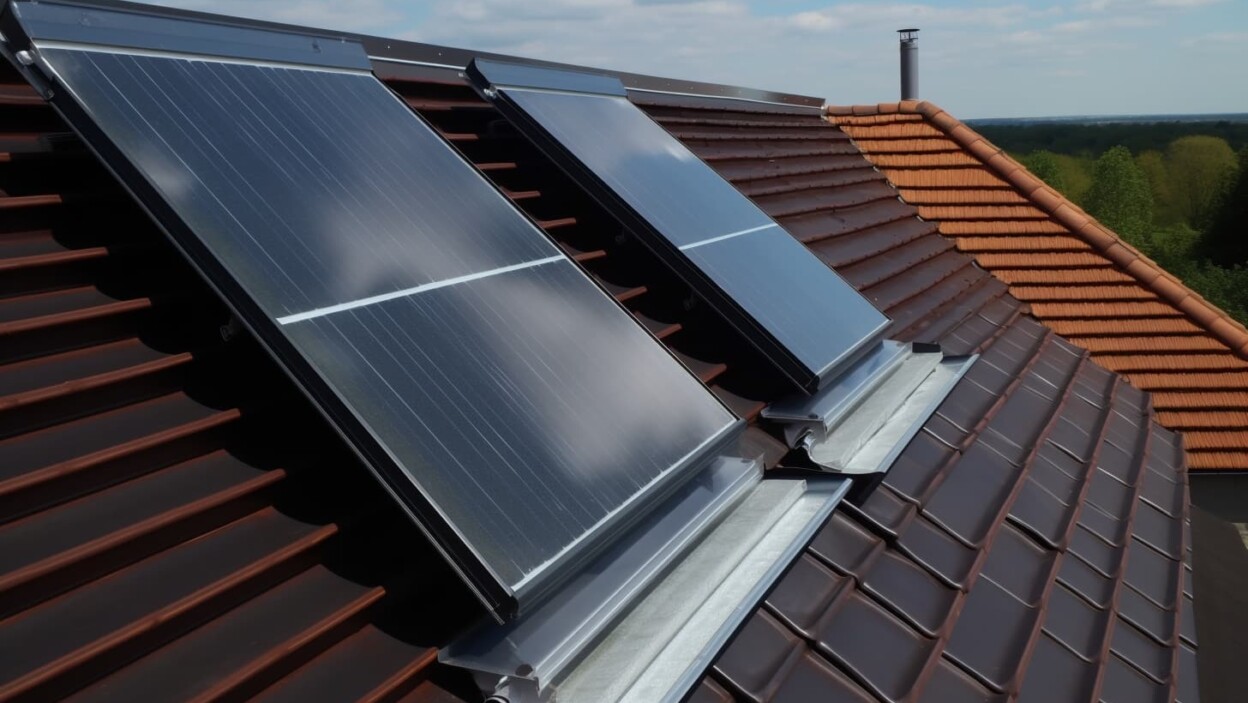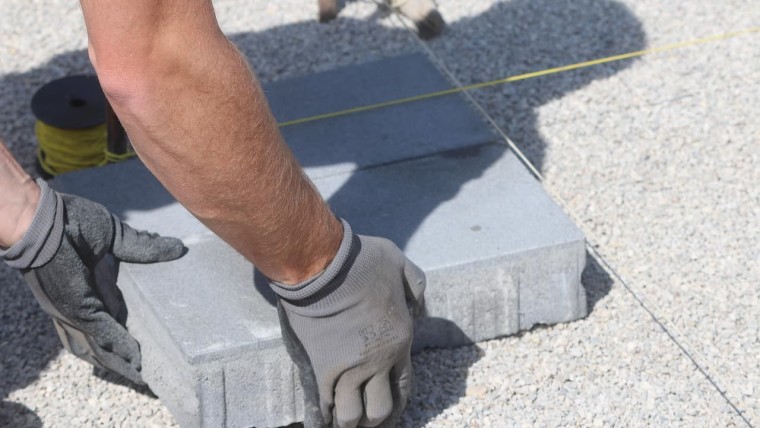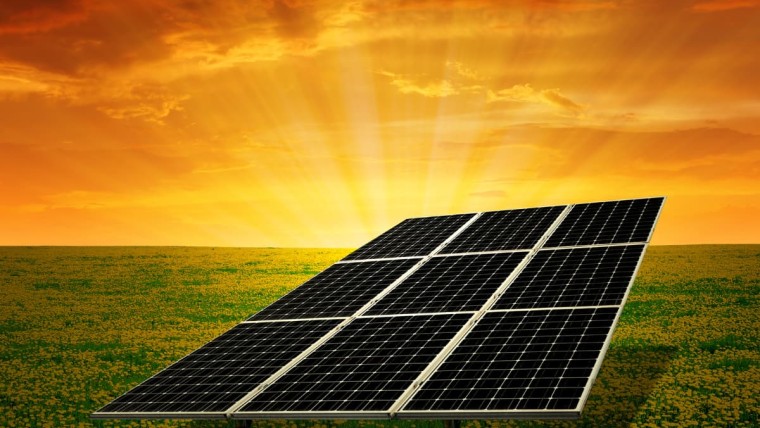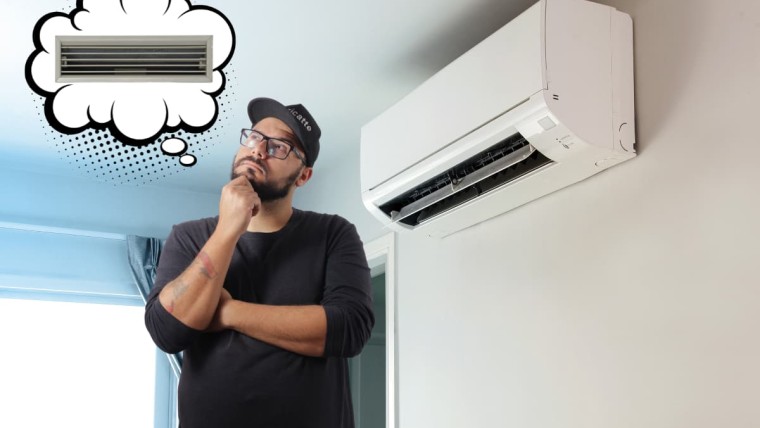The solarothermal heat pump is the combination of two technologies that respect the environment without compromising the efficiency and thermal comfort of occupants: the heat pump and solar energy.
In this practical guide, we take a detailed look at the solar thermal heat pump: how it works, types of solar panels, advantages and disadvantages, selection criteria, installation procedure, subsidies and user feedback.
What is a solar thermal heat pump?
The solar-thermal heat pump, sometimes referred to as a solar heat pump or solar PAC, is a heating and air-conditioning system that combines the action of solar thermal panels (STPs) and an air-to-water (or water-to-water) heat pump.
Objective To ensure thermal comfort for occupants while optimizing energy consumption and reducing greenhouse gas (GHG) emissions by using a free, renewable energy source.
Solar thermal heat pump: how does it work?
The solarothermal heat pump combines the mechanism of a conventional heat pump with that of solar energy. Its operation can be summarized in 7 steps:
- The cycle begins with the capture of solar energy. Thermal solar panels are installed on the roof or in an open space exposed to the sun. Made from absorbent materials, these panels convert solar energy into heat, which is then transferred to a heat-transfer fluid (usually water or a water/antifreeze mixture) inside the panel tubes;
- Heated, the heat transfer fluid circulates through an exchanger. The heat is then transferred to another fluid that heats the air or water in the building;
- The water heated by the exchanger is distributed indoors via a heating or air-conditioning circuit, usually a radiator, underfloor heating, fan coil units, etc. ;
- Excess solar thermal energy can be stored in a thermal reservoir for later use when sunshine is insufficient;
- In this system, the role of the heat pump is to take over when solar thermal energy is insufficient to meet the needs of the occupants. The heat pump extracts heat from the outside air, ground or water, depending on its type, and transfers it indoors (heating), or extracts heat from indoors and rejects it outdoors (cooling).
To ensure smooth operation, a control and regulation system is set up to monitor ambient temperature and the building's energy requirements.
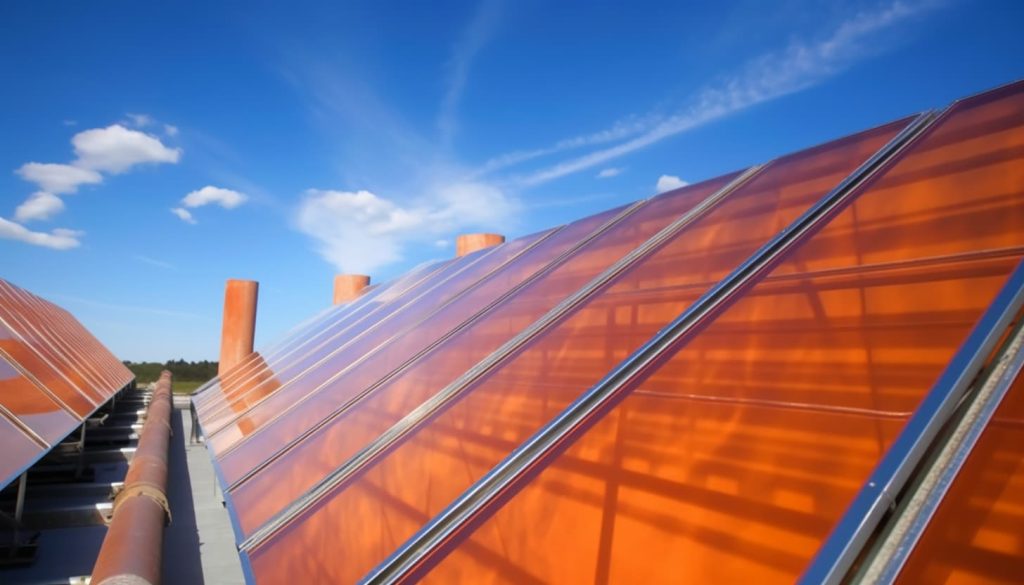
PAC solarothermique : which solar panels to use ?
The solarothermal heat pump uses solar thermal panels to absorb heat from the sun's rays and transfer it to a heat-transfer fluid that circulates through the system. Solar thermal heat pumps should not be confused with "heat pump - photovoltaic panels" systems. In this case, the photovoltaic panels supply the heat pump and other appliances in the home with electricity, via an inverter that transforms direct current into alternating current.
Finally, a solar-thermal heat pump can use hybrid panels, insofar as they combine the action of thermal solar panels (rear face) and photovoltaic solar panels (front face).
| Type of solar panel | Operating principle | Benefits | Disadvantages |
| Thermal solar panels | Thermal solar panels absorb heat from the sun's rays and transfer it to a heat transfer fluid that circulates through the system. | High energy efficiency for heat production. Less expensive than photovoltaic and hybrid panels. Thermal energy can be stored for later use. | Do not generate electricity directly. Performance highly dependent on weather conditions and sunshine. |
| Hybrid solar panels (PVT) | Hybrid solar panels combine photovoltaic and thermal technologies in a single panel. They simultaneously produce electricity and heat, enabling a heat pump to be powered while generating electricity for other uses. | Combined production of electricity and heat. Higher energy efficiency than photovoltaic or thermal panels alone. Optimal use of the roof space. | Higher installation costs than solar thermal and photovoltaic panels alone. Increased system complexity requiring more rigorous maintenance. |
Solar thermal heat pumps: advantages and disadvantages
The advantages are many: energy savings and low greenhouse gas emissions, especially if the heat pump is coupled with hybrid solar panels. In fact, this combination uses a free, renewable energy source to heat or cool.
The solar thermal heat pump is also extremely versatile, as it can be used for heating, cooling and domestic hot water (DHW) production. Last but not least, the solar thermal heat pump is a tried-and-tested, reliable piece of equipment with a long service life.
On the downside, output fluctuates with the seasons, but autonomy remains very attractive, at around 80 %... provided the installation is carried out to the highest standards and the home is impeccably insulated (RE 2020).
The initial cost of installation is also high, averaging €13,000 excluding installation. However, this investment is alleviated by grants and financing schemes, as well as the energy savings achieved over the long term.
How do I choose my solar-thermal heat pump?
The choice of each component of your solar thermal system (heat pump - solar panels - control system) requires certain prior knowledge.
Unless you're well-versed in the subject, we warmly recommend that you call in a professional who can analyze your needs and advise you on the most appropriate equipment. However, here are 6 essential criteria to help you make an informed choice:
- Type of solar panel Refer to the table above to decide which type of solar panel to use with your solar thermal system;
- Type of heat transfer fluid Some systems use water, while others use a mixture of water and glycol (antifreeze). If you live in a region where temperatures regularly drop below zero, we recommend an antifreeze heat transfer fluid to prevent pipes from freezing;
- Heat pump type Choose between air-to-water, air-to-air, water-to-water and ground-to-water heat pumps, depending on the heat source available (air, water, ground) and the intended use (heating, cooling, domestic hot water production). Note: the air-to-water heat pump is suitable for warm or temperate regions, while the geothermal heat pump will give you better performance in colder regions;
- Coefficient of performance COP: COP is an indicator of a heat pump's energy efficiency. The higher the COP, the more efficient the heat pump is at converting electrical energy into thermal energy. Look for a heat pump with a high COP to maximize energy savings (and take advantage of government subsidies);
- Regulation and control system It must be able to monitor and adjust temperature according to weather conditions and heating or cooling requirements;
- Compatibility with other heating systems If you already have a heating system (boiler, radiators, underfloor heating), check that the planned solar thermal heat pump is compatible with this equipment;
- The guarantee This is generally very long for solar panels (up to 25 years), and 5 to 10 years for heat pumps.
How do I size my solar thermal heat pump?
Only a qualified professional will be able to give you a precise answer... which doesn't mean you can't have an idea of the order of magnitude. Keep in mind the following principle: very roughly speaking, one square meter of solar thermal panels will heat an area of 10 m². Let's assume that the average solar thermal panel is 2 m² (in reality, this can range from 1.5 to 4 or even 5 m², with an average of 2 m²):
| Living area (m²) | Panel surface solar thermal (m²) | Number of solar thermal panels (2 m²/panel) |
| 50 | 5 | 2.5 (rounded to 3) |
| 75 | 7,5 | 3.75 (rounded to 4) |
| 100 | 10 | 5 |
| 125 | 12,5 | 6.25 (rounded to 6) |
| 150 | 15 | 7.5 (rounded to 8) |
| 200 | 20 | 10 |
What you need to know about installing a solar thermal heat pump
Solar thermal heat pumps must be installed by a qualified professional with the necessary certifications and expertise. In France, use a professional who is "Reconnu Garant de l'Environnement" (RGE).
Installation of the solar thermal heat pump
He'll start with a site assessment to determine the optimum location for the solar panels and heat pump. The solar panels should face south and be angled to maximize exposure to the sun. For its part, the heat pump should be installed in an accessible location to facilitate maintenance and repairs.
The solar thermal heat pump can be used to complement an existing heating system, such as a gas or oil-fired boiler. The installer must ensure that the two systems are properly integrated and operating optimally. For sizing, your installer will need to take into account the living area, building insulation, local climate and heating requirements.
He will then install the solar panels, heat pump, hot water tank and other components in accordance with the manufacturer's specifications and local regulations. Once the installation is complete, he will proceed with commissioning and routine checks. Installation usually takes about a week (there's a lot of work involved!).
As a rule, solar thermal collectors require very little maintenance. However, you should plan regular checks to ensure the system's performance and longevity, and avoid major breakdowns that threaten the profitability of your investment. Your installer will provide you with care and maintenance instructions, and tell you how often you should have your system checked.
Solar thermal heat pumps: installation costs and lifespan
As explained above, the cost of a solar thermal heat pump is around €13,000, plus installation costs of between €4,000 and €6,000. Annual maintenance (mandatory in some countries, such as France) varies between €150 and €300 per year.
As for lifespan, solar thermal panels can exceed 30 years, compared with 15 to 20 years for the heat pump.
Solar-thermal heat pumps: you are entitled to subsidies to finance your project
Several EU countries offer subsidies and financing schemes to encourage households to switch to clean energies, in line with the goal of carbon neutrality by 2050. Take France, for example:
- The energy bonus, worth between €5,000 and €10,000 for low-income households to finance renovation work or the replacement of a heating system as part of the energy transition;
- MaPrimeRénov', a scheme designed for owner-occupiers and landlords (and co-ownerships under certain conditions) to finance energy improvements to their homes: insulation, change of heating system, installation of a heat pump or CMV, etc. The amount varies according to household income level, type of work carried out and post-project energy performance. The amount varies according to household income, the type of work carried out and the post-work energy performance. For solar thermal heat pumps, the amount of the bonus can be as much as €10,000;
- Eco-prêt à taux 0: an interest-free loan of up to €30,000;
- Aid from local authorities, depending on the region and commune.
Finally, the French government applies a reduced rate of VAT (10 %) to solar thermal heat pump equipment.
Opinions and testimonials: what do users think of the solar thermal heat pump?
It's not easy to give a comprehensive overview of the opinions and testimonials of solar thermal heat pump users, as experiences can vary according to model, manufacturer, installation quality and regional climatic conditions.
However, here are a few common points to be found in feedback from users of solar thermal heat pumps:
On the plus side:
- Energy savings achieved by using solar energy to heat the home and produce domestic hot water, with lower energy bills and greater independence from energy suppliers;
- Ecology Many users are satisfied with the positive environmental impact of their solar thermal heat pumps. By using solar energy, they reduce their consumption of fossil fuels and contribute to the fight against climate change... even if the manufacturing process for solar panels is criticized by some users as not being very environmentally friendly;
- Reliability Solar heat pumps: users generally report that their solar heat pumps are reliable and low-maintenance. If properly designed and installed, systems can last for decades.
On the negative side :
- High initial costBut the subsidies and energy savings achieved over time will accelerate the payback period;
- Dependence on sunlight Some users report inadequate performance during harsh winters. They usually have to resort to an auxiliary heating system to meet their energy needs;
- Installation complexity.

Reda T.
Reda holds a PhD in finance and specializes in renewable energy economics. He combines financial expertise with an interest in sustainability, writing not only on the financing of green projects, but also on more general topics and frequently asked questions in this field.
